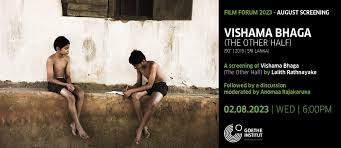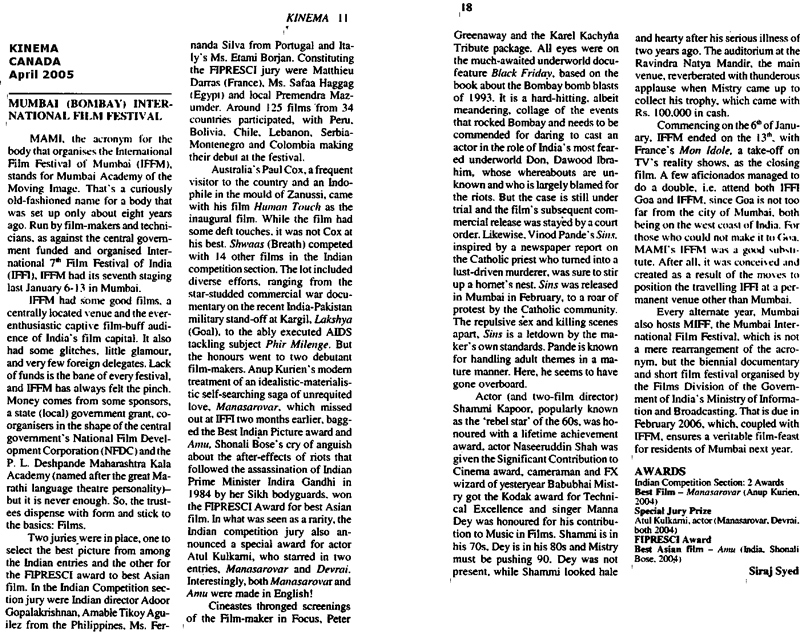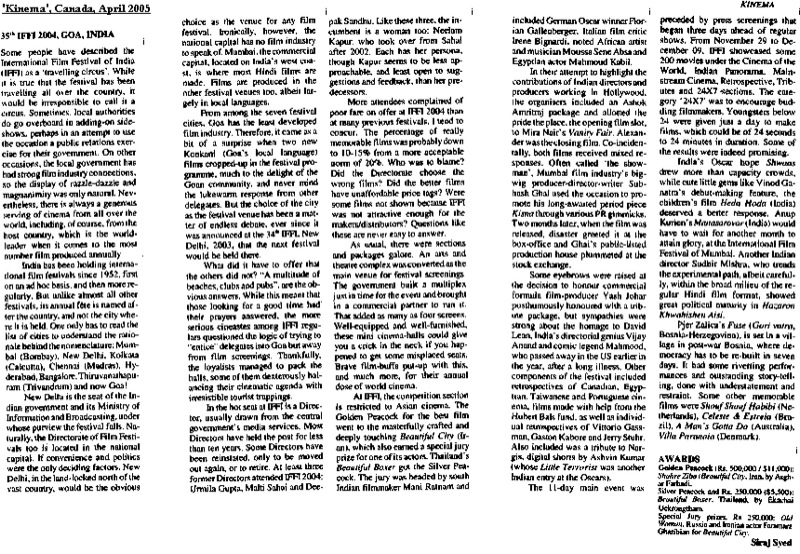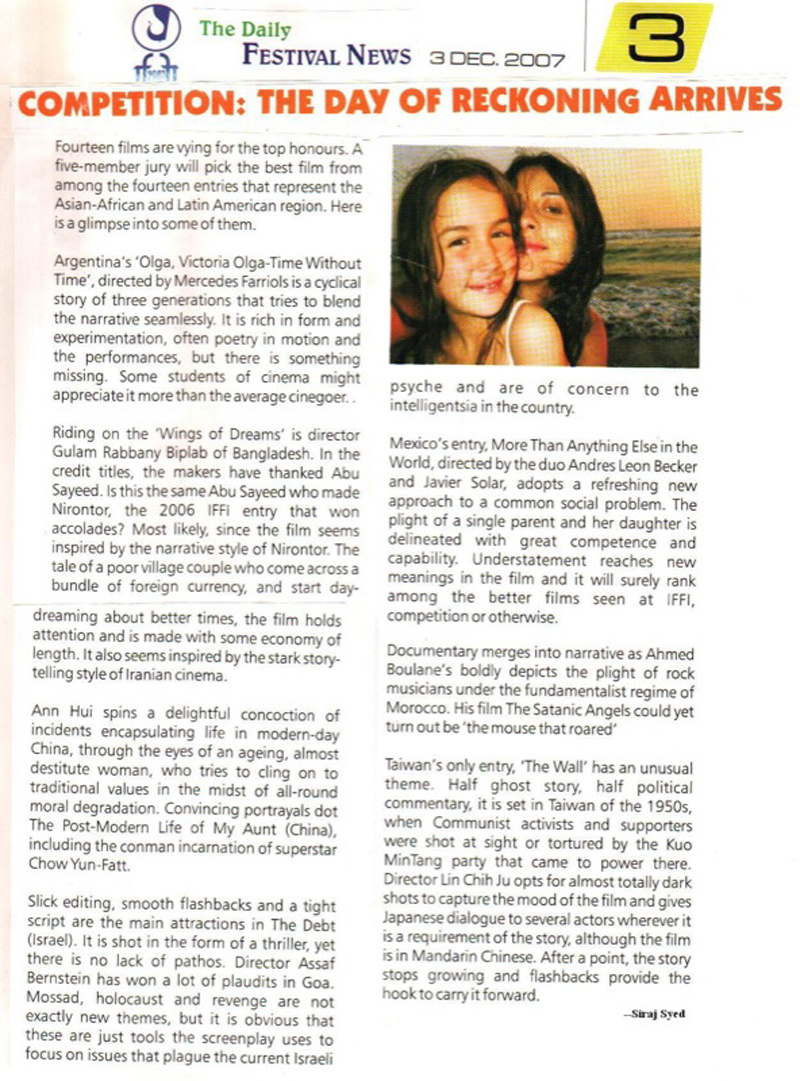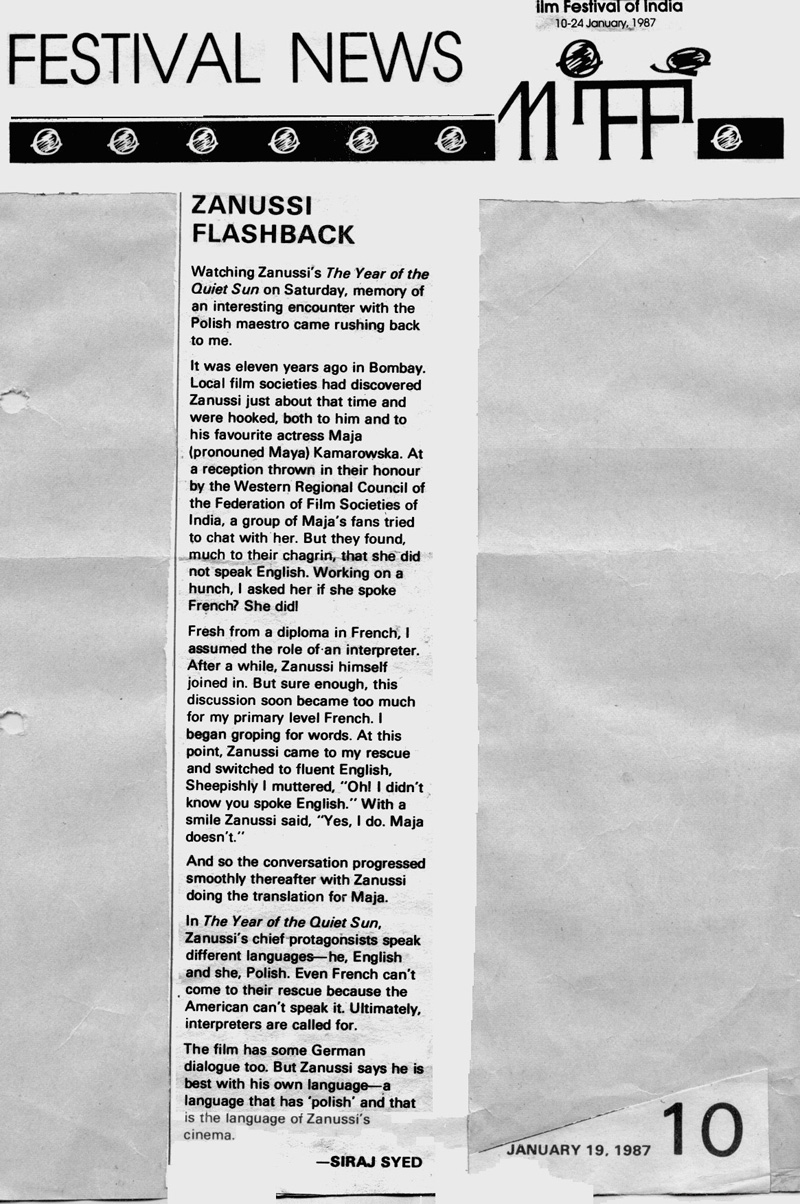|
|
||
|
Pro Tools
FILMFESTIVALS | 24/7 world wide coverageWelcome ! Enjoy the best of both worlds: Film & Festival News, exploring the best of the film festivals community. Launched in 1995, relentlessly connecting films to festivals, documenting and promoting festivals worldwide. Working on an upgrade soon. For collaboration, editorial contributions, or publicity, please send us an email here. User login |
Srilankan film The Other Half, Review: Death, despair and despondency
Srilankan film The Other Half, Review: Death, despair and despondency In the opening titles, the carries a long message about Srilankans dying of kidney failure, caused by the wide use of contaminated or sub-standard fertilisers and pesticides. As many as 50,000 of them have lost their lives due to such poisoning, and continue to die, making it a tragedy equal to, or perhaps even greater than the Civil War that ravaged the island state in recent decades. This makes you wonder whether a documentary or a docu-feature about the kidney ailment is about to follow. The Other Half is neither. There are barely one scene showing the pesticide burning in a field, several scenes of a child carrying water from an apparently contaminated stream/rivulet, and it is indicated that the chemicals have indeed caused loss of lives. But then the film takes another course, tracing the misfortunes of a family living in a remote village, in utter penury. The man of the house is dead, leaving his wife, twin sons and the grandpa, to fend for themselves. Almost 90% of the film then devotes itself to the despair, desolation and despondency of the family. As a premise, it might have been inspired by Satyajit Ray’s masterpiece, Pather Panchali, but comparisons are odious. All water consumed by the family is brought from the faraway stream, in a huge plastic container, by one of the boys. Sometimes, it lasts for two to three days, since the family is very frugal when it comes to consumption of the scarce water. The family hardly speaks to each other. A neighbour helps them out by carting the wood that the woman cuts to a buyer. They have a couple of cows, and that helps them survive, living a hand to mouth existence. There is no electricity at home. The boys go to a school, far from their home, and are both studying in Grade 5. One of them is gifted with the ability to sing, while the other is good at studies. While the music teacher is a kind and courteous person, the mathematics teacher is quite the opposite. He refuses to allow two of the students leave from his classes, to practice the song that their principal has written, and which will be sung on the Annual Day.
Two developments loom large over the heads of the boys. Firstly, grandpa needs to be taken to the hospital for a check-up. This task involves going to the hospital a day in advance and getting a token number for the next day’s visit. One of the brothers goes to the hospital on a bicycle, owned by his neighbour, double seat. There he remembers his visit to see his dying father. Grandpa suggests that one of the brothers, who is facing a crisis at school, accompany his mother and grandpa, thereby allowing him to bunk school. The crisis at school involves a math sum that the teacher wants one of the brothers, the musically inclined one, to solve. If he fails, thunders the teacher, he will be relegated to Grade 4, a prospect that would bring humiliation on the child and inflict a deep wound on his psyche. His brother can help him, but the singer is not familiar with even the basics of ‘fractions’, on which the sum is based. Titled Vishama Bhaga in Sinhalese, this 2019 film is written and directed by Lalith Rathnayake. It has a thin story and even the short duration of 90 minutes seems laboured. There are no twists in the narrative, except one, at the climax. For a large part of the film, Lalith wants his images to speak and keeps the scenes deprived of dialogue. Images do convey feelings, and silences sometimes wax eloquent, but Lalith depends too heavily on such absence of dialogue. There is one song and two poems, one of which is repeated at the climax. Both are of a high calibre. He includes a scene of the Buddha being worshipped (Buddhism is the dominant religion in Srilanka) and the poem he uses twice says that life is full of unhappiness. All the characters are incomplete and there is hardly any back story given to any one of them. Devoid of any relief, the film sinks lower and lower into pitiable depths as it progresses. It is a grim tale and neither entertains nor tickles you by any stretch of imagination. If you go with the flow, you can only emerge deeply depressed after seeing the film. Rathnayake is in love with the pristine Srilankan countryside and the film is full of wide-angle shots that are an ode to mother nature. In terms of emotions, he makes most of his actors hold expressions for far too long, without saying a word. And these ‘expressions’ are usually forlorn looks, conveying woe and angst. One cannot help concluding that he is a painter, and cinema is an extension of his basic art of painting. Almost like still life, there are scores of shots that could well be paintings. He must be credited with carefully considered casting and bringing out impressive performances from all his actors, without exception. The casting of real life twins as twins is a tour de force, though it is confusing for a while till the separate identities register. Kudos all around to the cast. Jackson Anthony as Hemachandra, the Maths teacher Kaushalya Fernando as Heen Manika, the mother Hemasiri Liyanage as Madiris Thilakshini Ratnayake as Sakunthala Priyantha Sirikumara as Bandara, the neighbour Pankaja Wickramarathna as Kamalsiri, one twin Pansilu Wickramarathna as Ruwansiri, the other twin Music, sparingly used, is composed by Chamara Ruwanthilake. Cinematography by Palitha Perera frames painting after painting, in gloriously natural colours. Editing by Tissa Surendra is too liberal where ruthlessness was the more desirable option. In some ways, it is poor cousin of Pather Panchali, with the grandpa replacing the old woman. If you watch it, be ready to come out of the auditorium with a very heavy heart. If you don’t, you have not really missed much. Screened as part of an NFDC+Srilanka film festival, at the National Museum of Indian Cinema’s Auditorium No. 2, at Peddar Road, Mumbai, the film drew an audience that could be counted on your finger-tips. That does not speak well about the publicity efforts of NFDC. In the city which is sometimes called Bollywood, audiences of 100 cineastes should not be too difficult to muster, even if the film is from Srilanka. Rating: ** ½ 04.02.2025 | Siraj Syed's blog Cat. : Independent FILM
|
LinksThe Bulletin Board > The Bulletin Board Blog Following News Interview with EFM (Berlin) Director
Interview with IFTA Chairman (AFM)
Interview with Cannes Marche du Film Director
Filmfestivals.com dailies live coverage from > Live from India
Useful links for the indies: > Big files transfer
+ SUBSCRIBE to the weekly Newsletter Deals+ Special offers and discounts from filmfestivals.com Selected fun offers
> Bonus Casino
User imagesAbout Siraj Syed Syed Siraj Syed Siraj (Siraj Associates) Siraj Syed is a film-critic since 1970 and a Former President of the Freelance Film Journalists' Combine of India.He is the India Correspondent of FilmFestivals.com and a member of FIPRESCI, the international Federation of Film Critics, Munich, GermanySiraj Syed has contributed over 1,015 articles on cinema, international film festivals, conventions, exhibitions, etc., most recently, at IFFI (Goa), MIFF (Mumbai), MFF/MAMI (Mumbai) and CommunicAsia (Singapore). He often edits film festival daily bulletins.He is also an actor and a dubbing artiste. Further, he has been teaching media, acting and dubbing at over 30 institutes in India and Singapore, since 1984.View my profile Send me a message The EditorUser contributions |


















